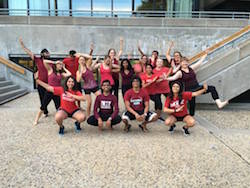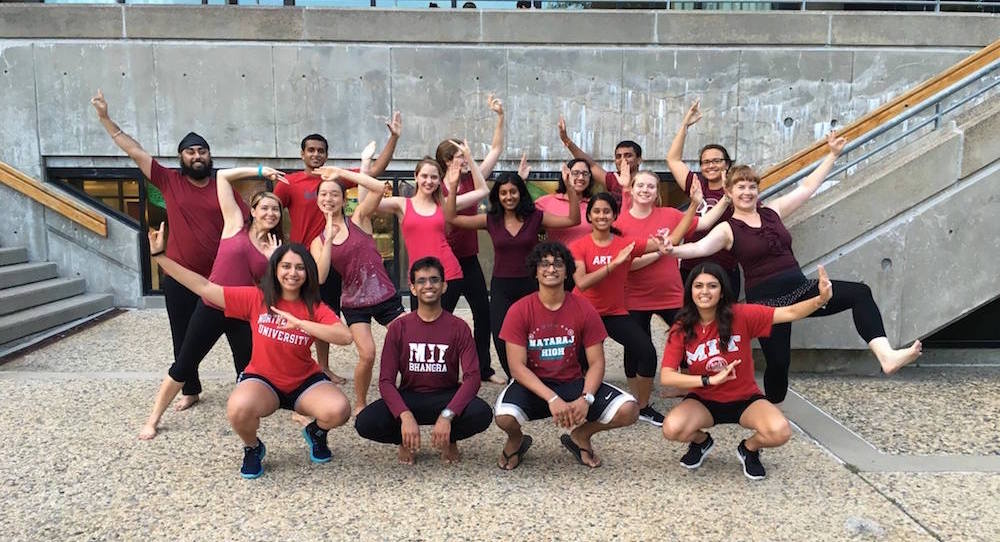Massachusetts Institute of Technology, Boston, Massachusetts.
August 10, 2017.
We all used to dance together, all the time; it wasn’t always confined to formalized dance classes, night clubs and weddings. Almost every “primitive” society had dance forms in which they joined nightly, weekly, on a new moon of a new month and so on. Communal movement was to be experienced and treasured by all. Every so often, a dance experience occurs that reminds us of this deep human truth – that dance can be strongly cultural and tribal, and at the same time open to, and unifying of, all who engage with it. The final performance of the Massachusetts Institute of Technology (MIT) Summer Bhangra program, open to students as well as the general public, was one such experience.
It was a wonderful summer night, not hot but comfortably t-shirt weather. The sun was beginning to set, and the sunset was breathtaking. It was the kind of night Boston residents crave through the long, raw and often snowy winters. The performance was out in the open air, the sky literally the limit. The relatively small but very respectable audience gathered in front of the steps of the MIT Stratton Student Center. They were young and old, male and female, and of all races.

MIT Summer Bhangra. Photo courtesy of Preksha Bhagchandani.
Many, but not all, of the dancers appeared to be of Indian descent. But, as they moved, none of that – in the slightest – even mattered. All of the dancers skillfully offered the Bhangra dance idiom, which originated as a celebratory dance in India’s Punjabi region. They wore street clothing with red, black and grey – MIT’s colors. The music, traditional Punjabi with modern additions of techno and hip hop-infused beats, was infectious.
The dancers matched it with their consistent energy and pure joy. Their very bodies rejoiced in the movement. It was a short performance, and one can understand why. The sheer physical, aerobic demand of the dance idiom is simply impressive and astounding. It seems to also have a choreographic wisdom, even though it wasn’t intended to be performative when developed.
There’s a wonderful level of crisp control, yet a release from that control to let the body and soul indulge in the movement. There’s use of high, medium and low levels, as well as different diagonal and facings. Just as with movement quality, there’s a clean aesthetic as the group moves together, yet an ease that keeps it all celebratory and fun.
The dancers offered all of this with overall command. They bent knees with heels rising, to switch facing. They opened and re-closed arms with one-legged hops, all of this with a lovely fluidity. Some parts could have been more unison, in both timing and precision of facing. Yet it’s quite difficult to have that consistent in such a fast, complex dance style. And a lack of total command of group made the performance feel more authentic and joyful – no “cookie cutter” perfection here. “Perfect” can get old, quickly.
The group includes dancers of many different levels of experience, but that didn’t stick out in this performance. That’s a credit to both the choreographers and dancers. All involved could share in the joy of the movement, no matter age, gender, ethnicity, class, et cetera. The performance, although short, spoke volumes about the collective joy that movement can offer. No matter the condition of our world and our communities, this is part of us. We can always come back to it.
By Kathryn Boland of Dance Informa.















